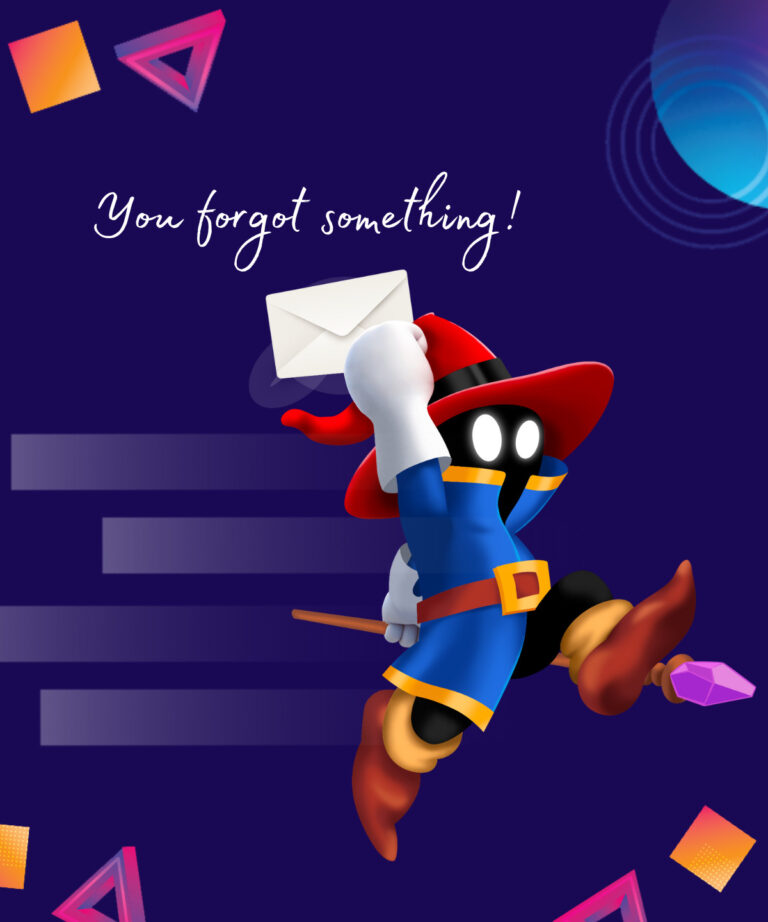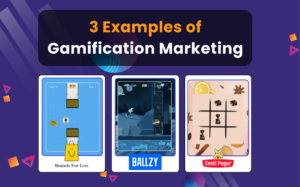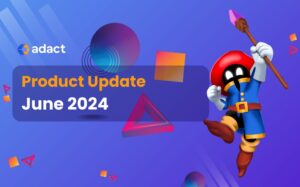Let’s jump into the captivating world of gamification, where technology meets psychology in a seamless blend. In this era of constant connectivity and information overload, capturing and retaining the attention of consumers has become more challenging than ever. Gamification has emerged as a beloved tool in the marketing realm, with an impressive 93% of marketers expressing their fondness for this engaging approach. Over the past few years, the gamification industry has witnessed substantial growth, a trend that is only set to soar higher. The recent pandemic accelerated our shift towards a digital, no-contact world, and gamification flourished in this space.
The gamification market shows no signs of slowing down, with estimates suggesting a remarkable 30.1% growth by 2024. And what better way to substantiate this claim than by exploring some compelling gamification statistics for 2023?

Most important Gamification Statistics
As the year 2023 unfolds, gamification continues to assert itself as a prominent force in the marketing world, revolutionizing how businesses engage with their audiences. Let’s explore some of the most important gamification statistics in 2023 that shed light on its impact and potential.
Customer Engagement
Customer engagement has always been a critical factor in driving brand loyalty and long-term relationships. In 2023, gamification proves its worth in this arena, as studies reveal that gamified experiences can increase customer engagement by 48%. So by integrating game mechanics into marketing campaigns, brands can create interactive and fun experiences that resonate with their target audience, encouraging them to actively participate and connect with the brand on a deeper level.
Brand Loyalty
Building brand loyalty is an ongoing challenge for businesses, but gamification emerges as a powerful tool to address this. In 2023, research indicates that companies with gamified loyalty programs experienced a 22% increase in customer retention. By rewarding customers with virtual badges, points, or exclusive perks, gamified loyalty programs incentivize repeat purchases and foster a sense of exclusivity, driving customer loyalty.
Employee Productivity
Gamification extends its benefits beyond customer engagement, proving its value in the realm of employee motivation and productivity. In 2023, companies that incorporate gamification into their employee training and development programs will witness an impressive 90% improvement in employee productivity. By utilizing interactive challenges and rewards, gamification learning statistics point to higher knowledge retention and job satisfaction.
Sales and Revenue Growth
When it comes to driving sales, gamification once again proves its effectiveness. In 2023, businesses that utilize gamification in their sales processes experience a 25.3% increase in sales conversion rates. Sales gamification statistics show that the correct approaches allow us to tap into consumers’ competitive nature, inspiring them to complete purchases and surpass milestones, thus boosting revenue generation.
Gamification Industry Statistics
The gamification market is experiencing rapid expansion, with a projected value of over $18 billion in 2023. This impressive growth can be attributed to the rising adoption of gamified solutions across various sectors, including marketing, education, healthcare, and employee training.
Gamification has transcended traditional boundaries and penetrated diverse industries, with over 70% of the Global 2000 companies integrating gamification into their business strategies in 2023. This surge in adoption showcases how gamification is no longer an optional add-on but a pivotal component for enhancing customer engagement, increasing employee productivity, and driving business results.
Gamification education statistics show that we have witnessed a big transformation in this field. In 2023, the eLearning market is expected to reach a value of $278 billion, fueled by the adoption of gamified learning platforms. These gamified training modules make learning enjoyable, increase retention rates, and improve the overall learning experience.
In the healthcare sector, gamification has been embraced to promote healthy behaviors and lifestyle changes. In 2023, the health and wellness gamification market is expected to reach $3.82 billion. Gamified fitness apps, wearable devices, and wellness challenges motivate individuals to lead healthier lives and achieve their health goals.
The promise of virtual reality (VR) opens new frontiers for gamification. In 2023, VR gamification is projected to generate $2.5 billion in revenue. The immersive nature of VR experiences offers positive user engagement and paves the way for new possibilities in training, entertainment, and customer experiences.
These statistics on gamification showcase the transformative impact of gamification on various aspects of business and society. As we navigate the dynamic landscape of 2023 and beyond, gamification continues to thrive as a game-changing force, empowering brands to create compelling experiences, drive user engagement, and stay ahead in an ever-evolving digital world.

Gamification Engagement Statistics
Engagement gamification statistics reveal the profound impact of integrating game mechanics into marketing and business strategies. As we look into the data, it becomes evident that gamification has become an absolute game-changer in the realm of customer engagement.
Gamification, as a dynamic marketing approach, not only captivates users but also drives active customer participation. Gamification engagement stats reveal that gamified experiences can boost engagement rates by a staggering 100%. By incorporating interactive challenges, rewards, and leaderboards into their marketing campaigns, brands can use the psychological aspect of human nature and tap into consumers’ desire for competition and achievement, resulting in a heightened level of engagement. This active involvement of customers translates to a more enjoyable experience, ultimately fostering deeper connections between the brand and its audience.
Another significant benefit of gamification lies in its ability to captivate users for extended periods. By offering interactive and entertaining experiences, gamification effectively encourages users to spend more time engaging with the brand. In fact, research indicates that gamified experiences can lead to a notable 30% increase in the time users spend on apps or websites. The enjoyable nature of gamification keeps users coming back for more.
Gamification Sales Statistics
Gamification has proven to be a powerful ally in the world of sales. By incorporating game mechanics and elements into sales strategies, businesses witness a significant boost in revenue generation and customer conversion.
Gamification’s impact on conversion rates is significant, with businesses witnessing up to 50% increase in conversions when utilizing gamified approaches. By creating a sense of urgency through limited-time challenges or exclusive rewards, gamification motivates users to take action and complete desired actions.
Gamification also significantly impacts the performance of sales teams. Implementing gamified sales contests and leaderboards motivates sales representatives, resulting in a 3,5 times increase in their performance levels. The competitive nature of gamification fuels their drive to excel, ultimately leading to improved sales results.
Furthermore, gamified referral programs drive brand advocacy and customer referrals. Brands that implement gamified referral systems observe a substantial increase in customer referrals. By offering rewards for successful referrals, gamification inspires customers to become brand advocates, spreading positive experiences within their networks.
Gamification in Education Statistics
One of the key benefits of gamification is its ability to significantly increase student engagement. Studies have shown a remarkable 89% increase in student participation rates when gamified learning experiences are implemented. By incorporating game-like elements such as rewards, badges, and levels into educational content, gamification motivates students to actively participate in their learning journey. Compared to traditional methods, students engaged in gamified learning experiences demonstrate a 40% increase in knowledge retention. The interactive and immersive nature of gamification fosters a deeper understanding and recall of the subject matter.
The learning experience is also greatly enriched by gamification. With a 70% increase in student satisfaction, gamification injects an element of fun and excitement into the learning process. By transforming learning into an enjoyable and interactive adventure, students become more enthusiastic about their studies.There’s no denying the power of gamification in education and we are all for it!
Trends and Predictions in the Gamification Industry
The gamification industry is on a constant evolutionary path, driven by technological advancements and changing consumer preferences. As we look into the future, several trends and predictions are shaping the trajectory of the gamification landscape.
One of the prominent trends is the integration of Augmented Reality (AR) and Virtual Reality (VR) technologies. As these immersive experiences become more accessible, businesses are expected to leverage AR and VR to create captivating and interactive gamified experiences. From educational simulations to brand engagement, AR and VR integration will elevate gamification to new heights.
Personalization and data analytics will also play a crucial role in the future of gamification. With a growing focus on delivering personalized experiences, businesses will rely heavily on data analytics to gather and analyze user data. This approach will allow them to tailor gamified experiences to individual preferences and behaviors, boosting user engagement and satisfaction.
The social impact of gamification will also gain momentum. Non-profit organizations and initiatives will leverage gamification to raise awareness and drive positive behavioral change. From promoting eco-friendly practices to encouraging charitable donations, gamification will emerge as a powerful tool in addressing societal challenges. Social gamification will thrive as users seek connection and engagement with like-minded communities. Here are some of the key elements for upcoming gamification industry trends and predictions based on current gamification stats:
- Screen Time Statistics
Screen time statistics play a crucial role in understanding the effectiveness and impact of gamification marketing in the digital landscape. As technology becomes increasingly integrated into our daily lives, people spend significant amounts of time interacting with screens, making it a prime opportunity for businesses to leverage gamified experiences.
According to screen time statistics 2023, the average person spends approximately 7 hours per day on screens, including smartphones, computers, and other digital devices. This extensive screen time opens up immense potential for gamification marketing to capture and retain the audience’s attention.
Gamification marketing strategies are designed to engage users and create interactive experiences that keep them hooked for longer durations. With the average attention span shrinking to around 8 seconds, gamification offers a unique approach to captivate audiences and break through the digital noise.

- Viral Marketing Statistics
Viral marketing statistics demonstrate the significant impact of gamification on creating shareable and contagious experiences. Gamification strategies have been found to increase sharing behavior among users, with gamified content being shared 12 times more than non-gamified content. By infusing game-like elements such as challenges, quizzes, and competitions, gamification encourages users to share their achievements and experiences with their networks, amplifying brand reach organically.
Beyond increased sharing, gamification marketing captures users’ attention and keeps them engaged for longer periods. Studies reveal that gamified campaigns experience a 100%-150% increase in user engagement compared to traditional marketing approaches. The element of fun motivates users to participate actively and share their accomplishments.
- Wheel of Fortune Statistics
The Wheel of Fortune has become a popular and engaging gamification tool in marketing strategies. As businesses seek innovative ways to connect with their audiences, the Wheel of Fortune presents a compelling opportunity to enhance user engagement and drive brand interaction.
Its engaging nature allows users to participate actively, generating an increase in user interactions compared to static content. Users are drawn to spin the wheel, anticipating the potential rewards or surprises it holds. Moreover, the Wheel of Fortune keeps users engaged for longer periods. This extended time on page allows brands to introduce their message more effectively and provides additional opportunities for conversions.
Get started with Gamification
The gamification marketing statistics for 2023 paint a compelling and promising picture of its transformative impact on various aspects of business and customer interactions. The rapid growth of the gamification industry, with a projected value of over $30 billion, and its integration across diverse sectors, including marketing, education, healthcare, and employee training, indicate that it is no longer an optional strategy but a fundamental element for businesses to thrive in the modern marketplace.
However, while gamification offers substantial benefits, businesses must strike a balance and implement responsible strategies to avoid potential negative impacts from excessive screen time and digital fatigue. As we move forward, harnessing the power of gamification will be crucial for brands to stay ahead and foster meaningful connections with their audience in an ever-evolving digital world.
Ready to take your marketing strategies to the next level? Get started with gamification today and unlock the full potential of your brand’s engagement and growth. Adact will help you explore cutting-edge gamification solutions that will captivate your audience and drive real results. Whether you want to boost customer engagement, enhance employee productivity, or increase sales revenue, gamification holds the key to success. Don’t miss out on this game-changing opportunity!




